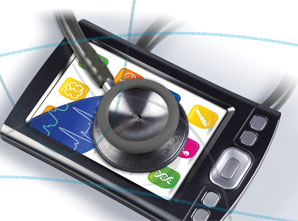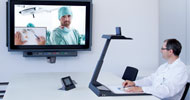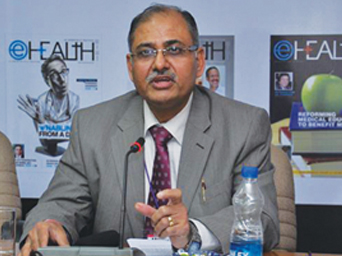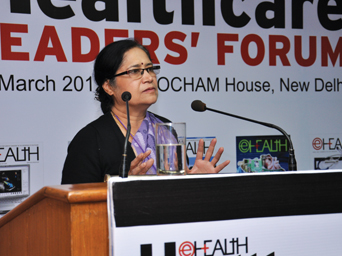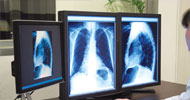
By Shally Makin, Elets News Network (ENN)
 The industry is looking forward to a much advanced world of sharing, communicating and analysing medical reports, Xrays and digital impressions. Analysing the need of healthcare organisations the engineers have crafted a mechanism to increase operational efficiency. Despite insignificant of Government initiatives towards shifting to a digital infrastructure, the technocrats create space to design such interfaces. PACS is a medical imaging device to capture the digital format of the image to store, manipulate and transmit over a computer network. The market is rapidly growing at a rate of 10 percent CAGR through 2014 globally as reported by various reports. The soaring adoption of RIS/PACS system has significantly reduced the implementation costs in the hospitals. As we observe shortage of medical staff and increasing number of patients, hospitals are encouraged to automate their systems to enable seamless exchange of information especially the radiology industry. With RIS, the information captured can be authorised, protected and interpreted in collaboration with the existing hospital information systems. Such sophisticated systems demand trained workforce and huge investments to completely produce effective results.
The industry is looking forward to a much advanced world of sharing, communicating and analysing medical reports, Xrays and digital impressions. Analysing the need of healthcare organisations the engineers have crafted a mechanism to increase operational efficiency. Despite insignificant of Government initiatives towards shifting to a digital infrastructure, the technocrats create space to design such interfaces. PACS is a medical imaging device to capture the digital format of the image to store, manipulate and transmit over a computer network. The market is rapidly growing at a rate of 10 percent CAGR through 2014 globally as reported by various reports. The soaring adoption of RIS/PACS system has significantly reduced the implementation costs in the hospitals. As we observe shortage of medical staff and increasing number of patients, hospitals are encouraged to automate their systems to enable seamless exchange of information especially the radiology industry. With RIS, the information captured can be authorised, protected and interpreted in collaboration with the existing hospital information systems. Such sophisticated systems demand trained workforce and huge investments to completely produce effective results.

The experts give their profound thoughts on the health IT industry and its scope to develop the RIS and PACS applications in the desired space.

Health IT market to grow at a CAGR of 20 percent

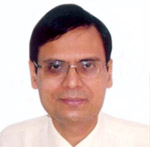 Anjan Sen, Director, Strategy & Operations, Deloitte in India
Anjan Sen, Director, Strategy & Operations, Deloitte in India

How do you perceive the growth of Health IT market?
There are some reports which mention that India has the fastest growing healthcare IT market in Asia. It has been growing at a healthy double-digit growth rate of around 20 percent. The demand for public healthcare is on the rise in India, but some immediate hurdles need to be overcome for achieving a higher growth rate. Advent of IT has not only ushered in an era of high productivity and service care accountability, it has also created a platform for introduction of advanced healthcare technology, and the ability to respond faster in case of medical emergencies.
Please brief us about the various technologies in this sector.
The role of technology is being felt across different areas and we believe that the spurt will come predominantly in the areas of EMR, Image Archiving and Medicine. Picture archiving and communications systems (PACS) can be integrated with health information system for quick and easy sharing and archiving resulting in benefits such as faster and more accurate diagnosis, near filmless process, flexibility across digital, systems, elimination of image loss, and, integration with EMR for a total solution, mobile based diagnostic and monitoring and HIMS.
What are the challenges being faced by the healthcare companies in India today?
For a large section of the population, especially that in rural areas, access to basic healthcare continues to be a problem. This is accentuated by the inadequate infrastructure of healthcare service delivery. Healthcare affordability in India remains very low. More than 82 percent of payments are made out of pocket as Insurance covers only a small percentage of the payments. To lower affordability barriers, healthcare ecosystem players are driven to innovate and create affordable solutions, and/or drive volume to generate economies of scale. A large segment of the population lives without access to basic education and lack health/disease awareness. There are currently only 0.7 beds per 1000 of the population. In addition, there is shortage of doctors, nurses and paramedical staff which further aggravates this gap in demand and supply.
How do you think IT in healthcare has transformed treatment procedures ?
The role of IT in healthcare is capable of transforming the record keeping, diagnostic, monitoring and treatment procedures prent now. Overall penetration of healthcare IT is fairly limited at present compared to other developed and even some developing countries. Diagnostic or monitoring tests, which were necessarily carried out in labs can now be done in the home of the patient. The opportunities of telemedicine and remote patient monitoring are yet to be fully utilised due to variety of reasons. The possibilities are endless and a country like India will require enabling technologies more than any other country.
What is your prediction for this market in the next decade in India? What are the growth contributors in the industry?
Health IT technology and electronics market is expected to grow considerably over the next few years. We expect that the health IT and related technology market to grow to USD 2+ Billion by 2015 growing at a CAGR of ~20 percent. We believe that the growth will be fuelled by uptake of healthcare management information systems (HIMS), EMRs, PACS, and medical electronics market. In summary, the key growth contributors are demand supply gap. Favourable shift in consumers socio-economic conditions, increased spend by the private sector and increased government spending and regulatory incentives.
What are the standards laid down for the healthcare industry? Do we have enough policies defined for regulating the market?
In USA, the Health Insurance Portability and Accountability Act of 1996 (HIPAA), Health Information Technology for Economic and Clinical Health Act (HITECH Act), etc. are examples of some laws that have been instituted to cater to clinical and technological legal statues governing e-Health and telemedicine. Essential attributes such as clinical data privacy control, data protection, data security, cyber security, patient safety, confidentiality maintenance, etc. need to be governed by law. India currently lacks adequate dedicated e-health and telemedicine laws.
Be a part of Elets Collaborative Initiatives. Join Us for Upcoming Events and explore business opportunities. Like us on Facebook , connect with us on LinkedIn and follow us on Twitter , Instagram.
"Exciting news! Elets technomedia is now on WhatsApp Channels Subscribe today by clicking the link and stay updated with the latest insights!" Click here!








